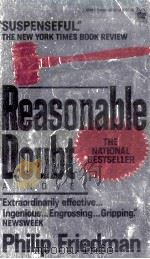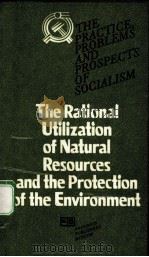《The Rational As Reasonable》
| 作者 | 编者 |
|---|---|
| 出版 | Springer |
| 参考页数 | 276 |
| 出版时间 | 1986(求助前请核对) 目录预览 |
| ISBN号 | 9789027722768;9027722765 — 求助条款 |
| PDF编号 | 812918898(仅供预览,未存储实际文件) |
| 求助格式 | 扫描PDF(若分多册发行,每次仅能受理1册) |
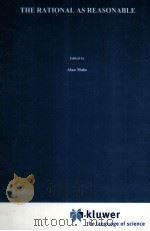
CHAPTER Ⅰ: INTRODUCTION1
1. The Point of Departure1
1.1. The Routine Cases and the Hard Cases1
1.2. The Dilemma of the Decision-Maker3
1.3. On the Responsibility to Justify the Decisions5
1.4. Legalism Contra Anti-Legalism7
2. A Scientific Approach to the Contents of Legal Norms8
2.1. The Scholar and the Judge8
2.2. Legal Dogmatics and Social Sciences10
2.3. Legal Dogmatics and Legal Practice13
2.3.1. Normal Legal Practice14
2.3.2. Judicial Practice15
3. The Concept of Legal Dogmatics - A More Precise Formulation17
4. The Angle of Approach and the Basic Problems19
CHAPTER Ⅱ: THE ONTOLOGY OF LAW26
1. General Remarks26
2. The Ontology of Interpretation in Legal Dogmatics28
3. The Validity of a Legal Norm33
3.1. Wroblewski's Three Approaches33
3.2. Systematic Validity33
3.3. The Efficacy of Legal Norms38
3.4. The Acceptability of a Legal Norm43
CHAPTER Ⅲ: THE METHODOLOGY OF INTERPRETATION IN LEGAL DOGMATICS47
1. Basic Concepts47
1.1. Two Research Strategies47
1.2. A Norm Statement and an Interpretative Statement49
1.2.1. The Concept of the Norm Statement49
1.2.2. Conclusion55
1.2.3. A Meaning Statement and an Interpretation Statement56
1.2.4. A Norm Standpoint and an Interpretation Standpoint59
1.2.5. Summary60
1.3. The Concept of the Norm61
2. A General Characterization of Interpretation and Interpretation Theory67
2.1. Interpretation as a Hermeneutic Process67
2.2. The Special Nature of Interpretation in Legal Dogmatics72
3. The Sources of Law and the Directives of Legal Interpretation77
3.1. On the Concept of the Sources of Law77
3.1.1. The Source of Information77
3.1.2. The Source of Reasoning77
3.2. The List of the Sources of Law78
3.2.1. The Finnish Catalogue of the Sources78
3.2.2. General Remarks88
3.3. The Categorization of the Sources of Law89
3.3.1. The Bindingness of the Sources of Law89
3.3.2. Authoritative Reasons and Substantial Reasons92
3.4. Directives of Legal Interpretation95
3.4.1. The Order of Preference of the Sources of Law97
3.4.2. The Standards of the Reasoning Procedure101
4. Justification of the Interpretative Standpoint: Structural Analysis107
4.1. The Point of Departure: Disagreement on the Result of the Interpretation107
4.2. The Scope for Interpretation: Gaps and Conflicts in the Legal Order110
4.3. The Procedure of Discourse115
4.4. Internal and External Justification119
4.5. The Structure of the Ex-Justification Procedure120
4.6. An Example of the Justification Procedure122
4.6.1. Travaux Priparatoires123
4.6.2. Systemic Interpretation126
4.6.3. Court Decisions as Reasons128
4.6.4. On the Doctrinal Opinion129
4.6.5. Practical Reasons131
4.6.6. Summary134
4.7. The Relation Between the Systematization and the Interpretation of Legal Norms136
4.7.1. The Concept of Systematization136
4.7.2. An Example of Systematization: An Analysis of the Position of the Heir149
CHAPTER Ⅳ: THE ACCEPTABILITY OF AN INTERPRETATIVE STATEMENT158
1. The Principle of the One Right Answer158
1.1. A Terminological Clarification158
1.2. Examples of the Doctrines of the One Right Answer161
1.2.1. Ronald Dworkin's Theory161
1.2.2. Norm Statements as Norm Propositions166
1.2.2.1. Norm Statements as Predictions166
1.2.2.1.1. The Specific Nature of Legal Predictions166
1.2.2.1.2. On the Alf Ross' Predictive Theory170
1.2.2.2. Ilkka Niiniluoto's Approach174
1.2.2.3. Norm Propositions as Technical Norms180
1.2.2.3.1 General Remarks180
1.2.2.3.2 Secondary Technical Norms181
1.2.2.3.3 Primary Technical Norms182
2. Acceptability and Rationality185
2.1 The General Preconditions of the Justification of an Interpretative Standpoint185
2.2 The Concept of Rational Acceptability188
2.3 Why Be Rational?193
2.4 The General Conditions of Rational Discourse195
2.4.1 The Point of Departure195
2.4.2 The Basic Principles and Rules of D-Rationality196
2.4.2.1. Consistency-Rules196
2.4.2.2. Efficiency-Rules196
2.4.2.3. Sincerity-Rules197
2.4.2.4. Generalization-Rules198
2.4.2.5. Support-Rules198
2.4.3. The Rules of the Burden of Proof201
2.4.3.1. Procedural Rules of the Burden of Proof202
2.4.3.2. Material Rules of the Burden of Proof203
2.4.4 Summary203
2.5. Interpretations and Evaluations204
2.6. Knowledge, Certainty and Form of Life213
2.7. The Audience and the Form of Life221
2.7.1. Perelman's Theory of the Audience221
2.7.2. Some Clarifications222
2.7.2.1. The Concrete Audience222
2.7.2.2. The Ideal Audience224
2.7.3. Rational Acceptability as a Regulative Principle for Legal Dogmatics225
EPILOGUE230
NOTES237
ABBREVIATIONS260
BIBLIOGRAPHY261
INDEX272
1986《The Rational As Reasonable》由于是年代较久的资料都绝版了,几乎不可能购买到实物。如果大家为了学习确实需要,可向博主求助其电子版PDF文件(由 1986 Springer 出版的版本) 。对合法合规的求助,我会当即受理并将下载地址发送给你。
高度相关资料
-

- The Limits To Rational Expectations
- 1987 Basil Blackwell
-

- A Reasonable Madness
- 1992 Mandarin Paperbacks
-

- Hungry as the sea
- 1978 doubleday & company inc
-

- REASONABLE DOUBT HENRY HURT
- 1985 HENRY HOLT AND COMPANY NEW YORK
-
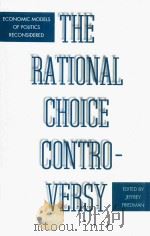
- The Rational Choice Controversy Economic Models Of Politics Reconsiderd
- 1996 Yale University Press
-

- Rational Choice
- 1999 Macmillan Press LTD
-
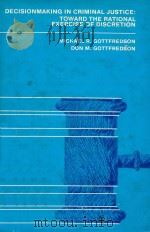
- DECISIONMAKING IN CRIMINAL JUSTICE:TOWARD THE RATIONAL EXERCISE OF DISCRETION
- 1980 BALLINGER PUBLISHING COMPANY
-

- JACKPOT
- 1950 FALCON PRESS
-

- DREAMING THE RATIONAL CITY
- 1983 THE MIT PRESS
-

- Reasonable efforts to prevent foster placement
- 1987 American bar association
提示:百度云已更名为百度网盘(百度盘),天翼云盘、微盘下载地址……暂未提供。➥ PDF文字可复制化或转WORD
